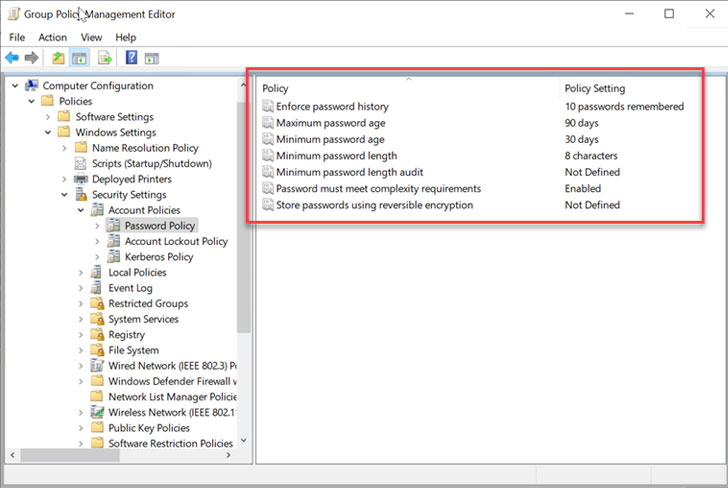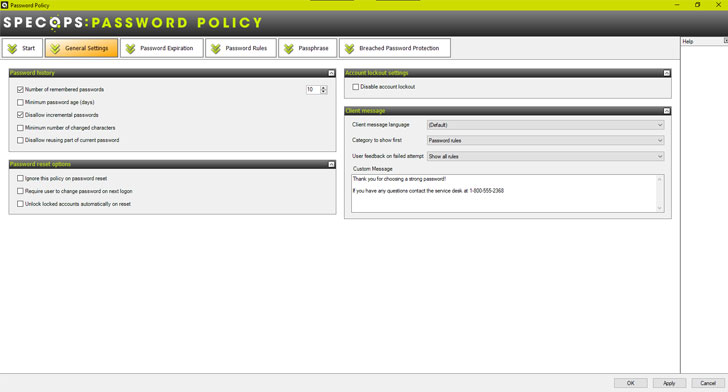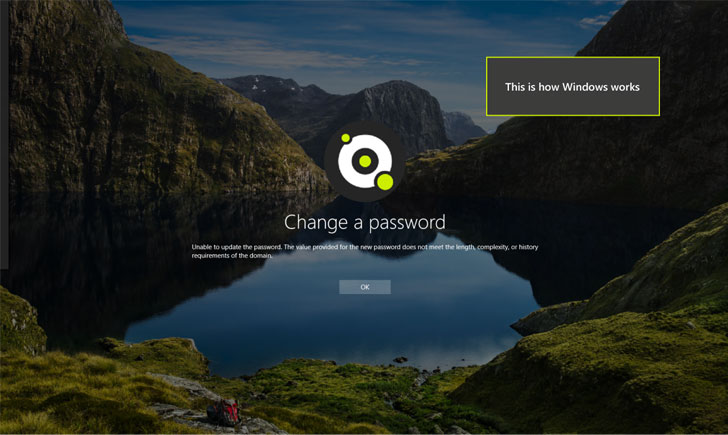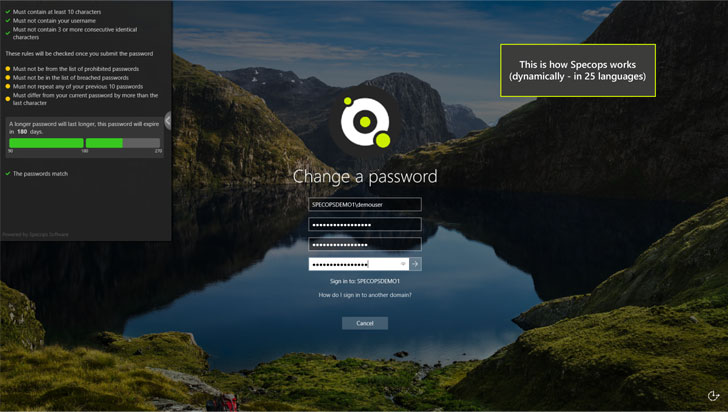Organizations today must give attention to their cybersecurity posture, including policies, procedures, and technical solutions for cybersecurity challenges.
This often results in a greater burden on the IT service desk staff as end-users encounter issues related to security software, policies, and password restrictions.
One of the most common areas where security may cause challenges for end-users is password policies and password changes. What are these issues? How can organizations reduce end-user password change frustration? First, let's consider the standard password policy, its role, and general settings affecting end-users.
What are password policies?
Most organizations today have a password policy in place. So, what is a password policy? Password policies define the types and content of passwords allowed or required of end-users in an identity and access management system. Various aspects of the password that businesses control may include the password's required length, composition (requiring certain characters), password age, and disallowing the reuse of passwords used before.
Microsoft's Active Directory Domain Services is arguably the most prevalent identity and access management system servicing on-premises environments today. Active Directory Password Policies allow businesses to control basic characteristics of end-user passwords with configurable password settings.
These settings include:
Enforce password history Maximum password age Minimum password age Minimum password length Minimum password length audit Password must meet complexity requirements Store passwords using reversible encryption |
| Configuring Active Directory Password Policy |
Active Directory Password Policies are enforced as part of Microsoft Active Directory Domain Services Group Policy. Group Policies can apply to a specific OU in Active Directory and filtered to apply to a particular user, group, or computer.
How password changes cause frustration for end-users
While password policies are significantly crucial to the overall cybersecurity posture of your organization, they can certainly lead to an increased burden on the IT service desk. The service desk fields the bulk of issues with password changes and account lockouts. Often, frustration results when end-users change their passwords as a result of password policy enforcement.
Many organizations choose to implement password policies that define password aging as part of policy enforcement. Password aging requires end-users to change passwords when the password's age reaches the days configured in the policy.
End-users who are required to change their passwords may mistype their password during the password change. It can lead to the account becoming locked out when they attempt to enter the password they "think" is correct. Also, end-users can encounter challenges simply setting their password. They may not fully understand the password policy requirements.
This ultimately leads to employees who cannot log in; meaning they are unable to be productive. In addition to being an expensive problem for that department (lost work); it also impacts the service desk.
Password Change Frustration – Costly for your business
Out of all the issues that service desk agents triage, the end-user password change can be among the most time-consuming and costly to the business. According to the Gartner Group, between 20% to 50% of all service desk calls are for password resets, while Forrester Research states that the average help desk labor cost for a single password reset is about $70.
Aside from the labor cost involved with the service desk, business continuity can be affected if a key user is locked out of their account or is experiencing application issues due to a changed password.
This situation can amount to less tangible costs associated with a password change. Additionally, if end-users are affected by a password change, this can trickle down to customers.
Reduce end-user password change frustration
Businesses cannot simply ignore security best practices simply for the convenience of end-users, no matter the seniority of the user calling the service desk. However, there are tools that can help reduce end-user password change frustration caused by a lack of clear messaging on why the password is being rejected.
Aside from providing a much more robust solution than the simplistic Active Directory Password Policy settings found natively in ADDS, Specops Password Policy is one tool that can provide this ability to reduce end-user password change frustration.
It includes the following two components that work together to provide much greater transparency to the end-user of password requirements and upcoming password changes required. These include:
Client message configuration Specops Authentication ClientIn Specops Password Policy, IT admins can configure the Client message to customize user feedback on failed password change attempts. Specops Password Policy can be configured to provide dynamic feedback to end-users, using the following settings:
Show all rules Show only failed rules Show only custom messages |
| Configuring the Client message in Specops Password Policy |
The Specops Authentication Client tool works with the above-configured setting to allow Specops to display the password policy rules when a user fails to meet the policy criteria when changing their password. The Client will also notify users when their passwords are about to expire.
The standard "change a password" screen in Windows can be a real source of end-user frustration. With no guidance on a password policy, previous password history, or dictionaries, a user often resorts to the service desk for help.
 |
| The standard Windows password change user experience |
When users have visibility into the specific reason why the password they are attempting to change to is failing, this can help the end-user better understand the password policy requirements and align the passwords they use with the corporate policy. Specops Password Policy has recently implemented dynamic feedback at password change.
 |
| Dynamic feedback at password change for Specops Password Policy end-users |
This capability also helps alleviate the burden on the IT service desk when end-users can better understand what is required of their corporate password. A better understanding of the rules reduces not only end-user frustration but also minimizes costly calls to the IT service desk.
Final Thoughts
Password security and policies are required to maintain an effective cybersecurity posture for organizations today. However, password policies and forced account password changes can create an extra burden on the IT service desk, as service desk agents triage and troubleshoot account password issues in the environment. Reducing end-user password change frustration can be facilitated by effective dynamic feedback from your password policy source.
Natively, Windows displays very vague messaging related to why a particular password is not allowed by a password policy. Specops Password Policy fixes this gap by enabling organizations to implement customizable dynamic feedback to the end-user.
For example, when they attempt to set a password that does not meet all the requirements configured in the password policy, it provides much greater detail into why the password set operation failed if it is not successful.
Learn more about Specops Password Policy here.
Found this article interesting? Follow THN on Facebook, Twitter and LinkedIn to read more exclusive content we post.
.png)
 3 years ago
278
3 years ago
278 















 Bengali (Bangladesh) ·
Bengali (Bangladesh) ·  English (United States) ·
English (United States) ·